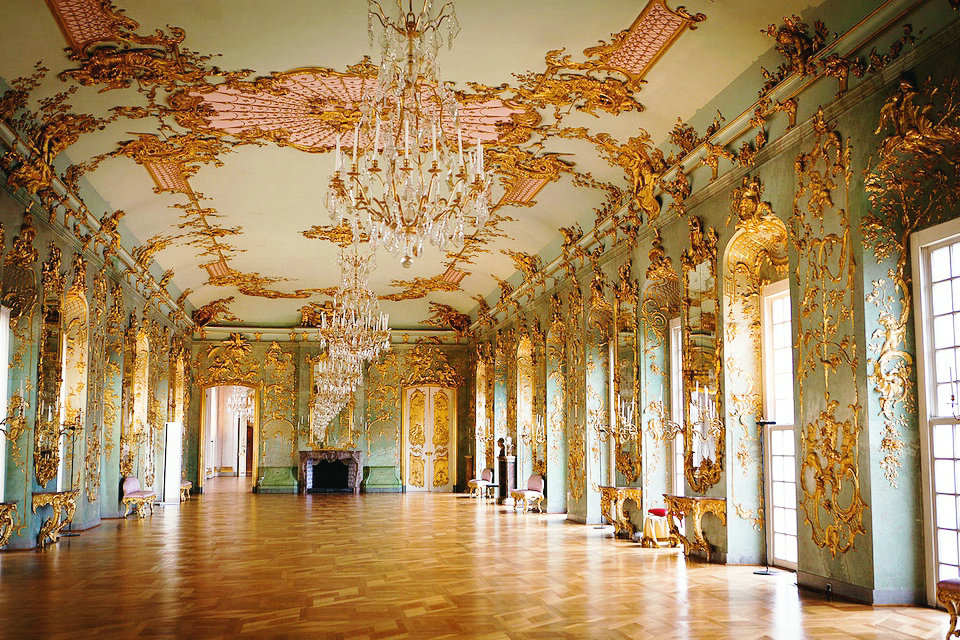Frederician Rococo


Frederician Rococo is a form of rococo, which developed in Prussia during the reign of Frederick the Great and combined influences from France, Germany (especially Saxony) and the Netherlands. Its most famous adherent was the architect Georg Wenzeslaus von Knobelsdorff. Furthermore, the painter Antoine Pesne and even King Frederick himself influenced Knobelsdorff’s designs. Famous buildings in the Frederican style include Sanssouci Palace, the Potsdam City Palace, and parts of Charlottenburg Palace.
The expression of Frederick Rococo is derived from Frederick II of Prussia, who drew the sketches of his palace in Sanssouci and the palace of Charlottenburg. The sculptors created works of art in rococo style, often following drawings sketched out by King Frederick II of Prussia, according to his own needs and inclinations from the king, often ignoring the common trends.
In the interior decoration Federico II decided in detail how the various rooms had to look. Artists such as the brothers Johann Michael and Johann Christian Hoppenhaupt, the brothers Johann Friedrich and Heinrich Wilhelm Spindler, Johann August Nahl and Johann Melchior Kambly created works of art in the Rococo style, often following drawings sketched out by the king. As for his person, Frederick II of Prussia was alien to any lust for luxury. He cared little about the label and the fashion – it was not unusual in his old age to wear loose or clean clothes – but he wanted to surround himself with noble and beautiful things. He had a fine taste for all that was beautiful and had his private palace decorated according to his own needs and inclinations, often ignoring common trends. From this personal interpretation of eighteenth-century art comes the expression of Federician rococo. Frederick II of Prussia permitted the expansion of the Charlottenburg palace by Georg Wenzeslaus von Knobelsdorff who had the New Wing built in the east.
Source From Wikipedia